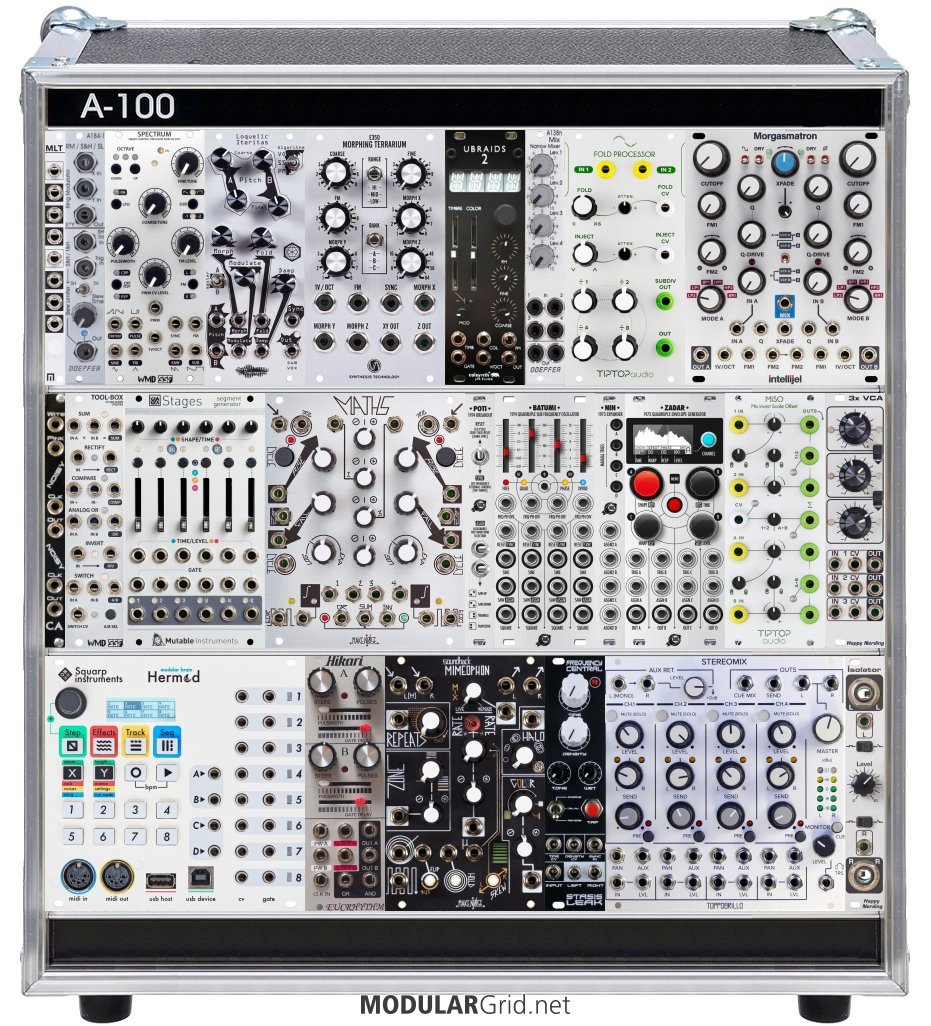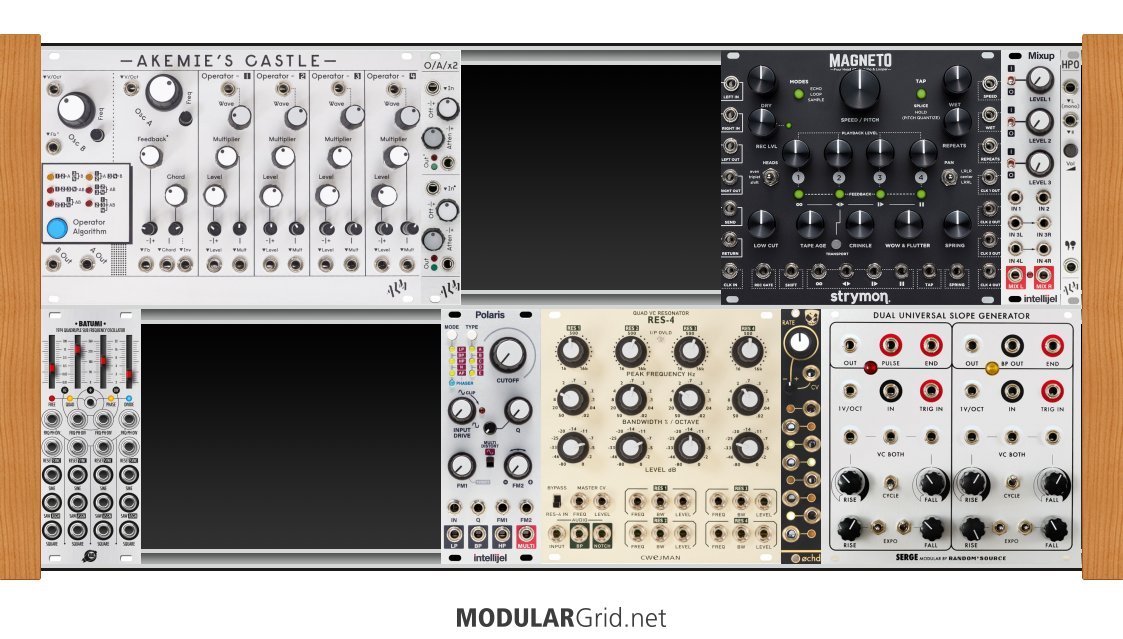you have mixed up 1u tiles - either pulp logic or intellijel style not both - if you are buying an intellijel case (which I suspect you are) then only intellijel sized 1u modules will fit - if anything else it'll probably be pulp logic - intellijel sized 1u will fit but not properly! - if you are DIYing it depends on the rails you buy, but in this case the rails etc will cost the same as for a 3u row - I'd go for the 3u personally - there's nothing particularly special about any 1u module that can't be done in way less hp in 3u, of course space may be a concern, but it's 10cm or so!!
your goals - my thoughts
SUMMARY: trying to do too much in too small a space with too many big feature modules and not enough support modules
- it should work in cooperation with a daw for further processing and control but also standalone
es9 ok - generative only standalone ok - I'd want at least some sort of programmable sequencer - something like a BeatStep Pro is always useful - or better yet - pick one to start and maybe save the others for case 2 or 3
- it should have tools for generative and random sound creation (but with control over the musicality)
ok - you've got some random (Bloom) and a function generator (falistri) but no real way of combining and altering them so they are more interesting (kinks and matrix mixer) - and only 1 vca (I bet you didn't realise that they are useful if not near essential for modulation as well as audio!)
- it should be able to create complete tracks (drums, bassline, synth, percussive stuff, .. )
you can't really do that all at once with this, can you? possibly everything separately, but definitely not at once - if you want to do this get smaller oscillators or get a bigger case
drums/percussive - modules or patch from scratch? patch from scratch is more modular, modules are smaller - neither is cheaper than a drum machine!!! - add a sub mixer (panning) for drums - get some low pass gates (buchla bongos)
maybe you are thinking of using the disting for this - I would buy this module early so that it leads you towards modules that you need, by exploring it's functionality - I usually want a kick, a snare and open/closed hats as a minimal drum/percussion system - probably won't get that from a single disting (even an EX)
bassline/lead/pad - yeah you can do 2 out of 3 - unless disting - see above
- it should be flexible and make fun for as long as possible, so that there is no quick reason to expand :)
that is a question only you can really answer and only when the case is full!
Other thoughts
Rainmaker is huge - there are plenty of other delay modules that are a lot smaller and just as good, if a little different - I would replace this so that you have room for a few more modules - Chronoblob2, Magneto etc all worth looking at
consider replacing the 2hp logic and s&h with a kinks - you get a rectifier as well - very useful!!
I think data is also quite big in a case this size! maybe for case no2 - also consider a smaller osc module - o'tool+ for example - or use the es9 to send whatever so you can use say vcvracks oscilloscopes when attached to the computer - if you need something to tune with get a pedal or use the disting!
(for a beginner) I would always recommend Maths over falistri - check out the maths illustrated manual online to see why
you don't need a buffered mult - really only needed for copying pitch?
consider the expander for the odessa
Mixing - do you want to have mono or stereo final mix output to the intellijel built in outputs via the 1u module?
if you want stereo and you want to mix in the rack - you need to take another look at your mixing solution - maybe you can use the es9 when standalone - would prefer a mixer with knobs on myself!
good to go slow!!!!
I would strongly suggest a minimum viable synth (a sound source, a sound modifier, a modulation source, a way to play, a way to listen) maybe 2 or 3 other modules (one of which should be a disting!!!!) at most and learn each module and how to play with them together - when you find yourself reaching for something that you don't have - or disting is stuck on buchla converter mode, for example, then is the time to buy the module you need not necessarily the one you want!
"some of the best base-level info to remember can be found in Jim's sigfile" @Lugia
Utility modules are the dull polish that makes the shiny modules actually shine!!!
sound sources < sound modifiers < modulation sources < utilities




